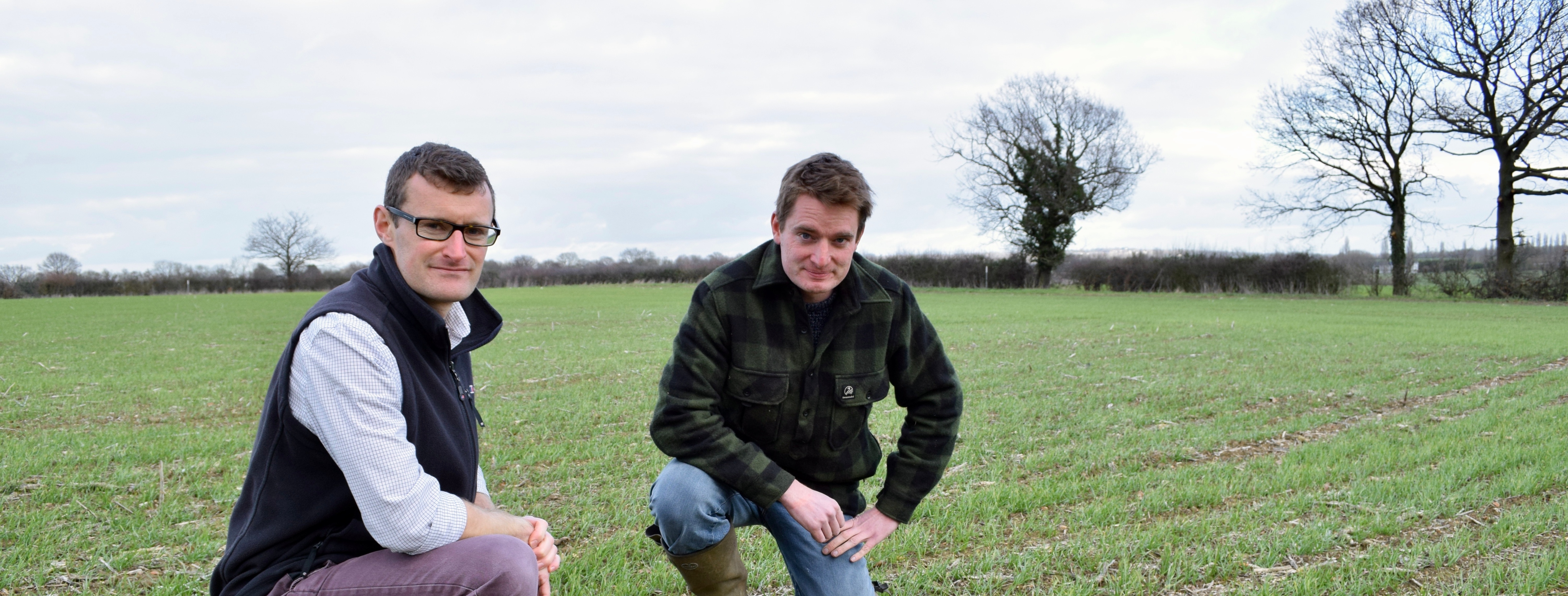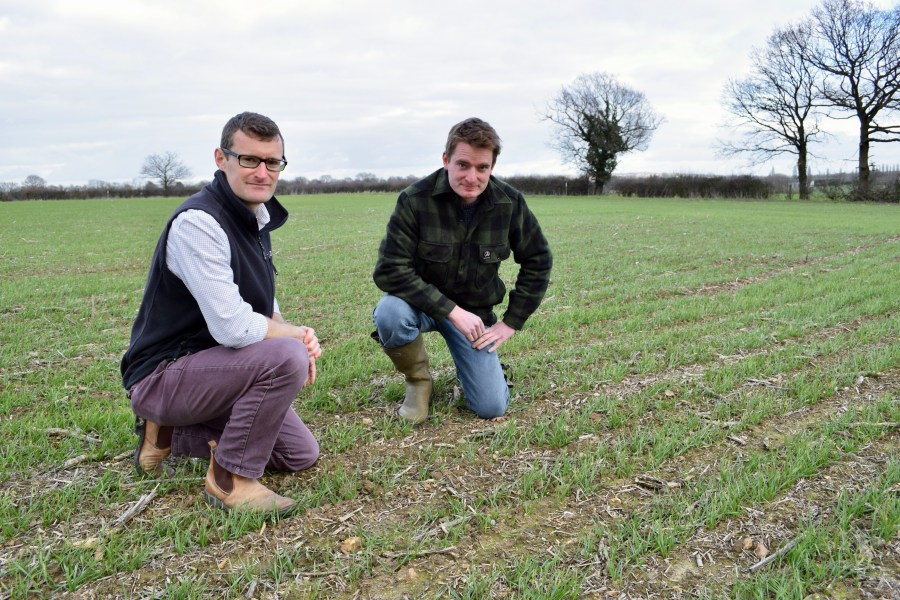
An AHDB Monitor Farmer is using a precision agronomy platform as the basis for making changes to management practice. CPM reports.
The aim is to build the detail over coming seasons and use it to help increase efficiency.
By Paul Spackman
While a number of farmers are now using precision agronomy to change seeding rates and identify poor-performing areas, Essex farmer Hew Willett is determined to take the technology a step or two further.
Hew runs Parklands Farm near Chelmsford with his mother Christy. An AHDB Monitor Farmer, he’s keen to reduce production costs without compromising yields, and improve efficiency on the family farm. So he’s rolled out the Omnia precision farming system across 475ha of arable cropping after a successful trial last season.
So far the system has mainly been used for analysing yield maps and producing variable seed rate plans to improve yield consistency on the heavy clay soil, but Hew and Farmacy agronomist Andrew Spackman are keen to expand its use to aid decision-making.
“I like the fact Omnia brings lots of data together in one place and is very intuitive to use,” says Hew. “The aim is to build the detail over coming seasons and use it to help increase efficiency.”
Last season’s variable seed rate work, combined with the farm’s Yield Enhancement Network (YEN) entry, revealed interesting results that will drive changes this year.
Variable seed rate plans were drawn up in Omnia, based on different “layers” of mapped data, including soil texture assessments, seedbed conditions, slug risk and weed pressure (notably blackgrass).
“On the worst areas of heavy clay, germination has been as low as 40-50%, so we felt confident seed rates could be increased up to 480 seeds/m² in these areas to give a more even plant population and get closer to our target of 700 heads/m² by harvest,” Hew says.
However, Omnia analysis of yield maps combined with results from YEN showed that while plant stands were more even, the yield benefit was harder to define.
“We’re on wide rows of almost 30cm with our Mzuri drill and it seems this might have been a factor limiting yields in our YEN trial last year.”
Andrew says increasing seed rate on wide rows increases intra-row competition, resulting in smaller plants and ears, and leaves a band of under-utilised space between the rows.
“The jury’s still out on what the definitive row width is, especially as varieties differ in their growth characteristics. Skyfall, for example will spread more in autumn than an upright variety like Crusoe.
“Row width and varietal characteristics are just two of many aspects you must consider when planning how best to vary seed rates. It’s a multifactorial decision-making process; you can’t look at any one aspect in isolation or simply increase or decrease the amount of seed used.”
Moisture availability is a major limiting factor in the south east of England, making it essential crop roots utilise as much water and nutrients below ground as possible, Andrew adds.
“We can’t afford to have unutilised areas within the field. Wide gaps between rows also let in more blackgrass and ryegrass. Equally, we need to consider the rooting demands [on nutrients and water] in very thick crops.”
Hew plans to change his drill this year and switch to more conventional 16-20cm row widths in the autumn. There are also plans to build on the bank of agronomic data held in Omnia at Parklands Farm, with the initial focus on soil health.
A comprehensive soil sampling programme based on zonal field mapping is planned this spring to set a baseline of soil health information and improve the existing data from previous grid-style surveys.
Drainage maps can be overlaid in Omnia to highlight any correlations with poor yields or grassweed infestations and identify areas for remedial work (e.g. mole draining, subsoiling or ditch clearance).
The aim is for more “targeted cultivations” and a move away from ploughing to a full direct-drilling system with minimal soil disturbance. This in turn should reduce establishment costs, and help improve soil properties such as organic matter, structure, drainage, and water holding capacity.
“Soils in this region are naturally very good at retaining nutrients, so the key is creating the right conditions for crops to access them,” says Andrew.
Hew hopes to reduce artificial phosphate and potash applications while maintaining soil indices around Index 2. “To do this, we’ve got to have good structure that allows crops to root freely and extract nutrients throughout the profile.”
It’s hoped grassweed management will benefit too. Indeed, the current rotation is split 50:50 between winter and spring cropping, largely because of high blackgrass and ryegrass pressure. Crops include milling wheat, oilseed rape, spring barley, spring beans, borage and millet.
Hew says Omnia’s gross margin mapping function, provides a good way of assessing the viability of alternative crops, and for identifying potentially loss-making areas of the field.
He’s used the system’s ability to combine multiple yield maps (4-5 years) to highlight areas that consistently underperform. In total, 35ha has been taken out of production and put into environmental stewardship options such as wild bird cover and wildflower strips.
“Where we’ve taken land out of production, I’ve tried to plan it so the cropped and uncropped areas can be managed efficiently; for example by making the stewardship area wide enough to manage with existing machinery, and leave an even tramline width on remaining cropped areas to make it easier for the sprayer.”
Cover crops add to the mix
Autumn-sown cover crops are becoming an established feature at Parklands Farm, bringing soil health improvements and facilitating spring drilling on the heavy clay.
This year’s mix was based on farm-saved beans, oats, OSR and rye, direct drilled into wheat stubble. “We want to keep it simple and low cost – our seed cost is £20-25/ha at most,” says Hew.
“The early harvest last year meant we got the cover in early and it’s done really well.”
The farm has just bought a flock of 50 ewes which graze cover crops overwinter and provide an additional income source.
Hew plans to try a wider species mix next season, potentially incorporating phacelia, vetch, stubble turnips, linseed or sunflowers. But brassica inclusion will be minimal as there’s OSR in the rotation.




